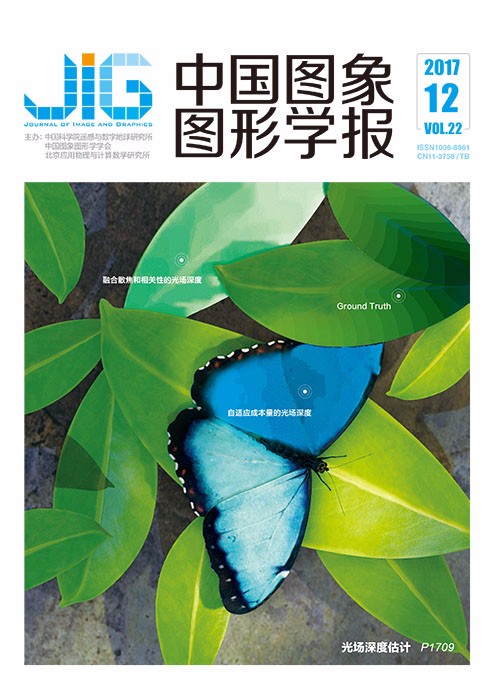
多特征融合的高分辨率遥感影像建筑物分级提取
摘 要
目的 针对高分辨率遥感影像普遍存在的同谱异物和同物异谱问题,提出一种综合利用光谱、形状、空间上下文和纹理特征的建筑物分级提取方法。方法 该方法基于单幅高分辨率遥感影像,首先利用多尺度多方向梯度算子构造的建筑物指数和形状特征提取部分分割完整的矩形建筑物目标;然后由多方向线性结构元素和形态学膨胀运算确定投票矩阵,从而获取光照方向,并利用光照方向和阴影特征对已提取建筑物进行筛选,剔除非建筑物对象,完成建筑物初提取;最后借助初提取建筑物对象的纹理特征向量建立概率模型,取得像素级建筑物提取结果,将该结果与影像分割相结合实现建筑物提取。结果 选取两幅高分辨率遥感影像进行实验,在建筑物初提取实验中,将本文方法与邻域总变分法和Sobel算子进行对比,实验结果表明,本文方法适用性强,为后提取提供的建筑物样本可靠性更高。在建筑物提取实验中,采用查准率、查全率和F1分数3个指标进行定量分析,与形态学建筑物指数结合形态学阴影指数算法、邻域总变分结合混合高斯模型和贝叶斯判决算法相比,各项精度指标均得到显著提升,其中查准率提高了2.90个百分点,查全率提高了12.49个百分点,F1分数则提升了8.84。结论 本文提出的建筑物分级提取方法具备一定抗干扰能力,且提取准确性高,适用性强。
关键词
Hierarchical building extraction from high resolution remote sensing imagery based on multi-feature fusion
Lin Yuzhun, Zhang Baoming, Wang Dandi, Chen Xiaowei, Xu Junfeng(Information Engineering University, Zhengzhou 450001, China) Abstract
Objective Buildings are important infrastructures in geodatabase. Extracting buildings effectively and accurately is significant in urban planning, population distribution, land analysis, and environmental surveys. However, buildings cannot be extracted using a unified model because of the common phenomenon of "same object with different spectra and same spectrum with different objects" and given that the spectrum, shape, and texture of a building are not exactly the same. Considering that most buildings are in rectangular shapes and that the spectral information of a building is generally more uniform than that of other objects, some buildings can be extracted with shape and gradient information. On this basis, the open space and waters are removed using the shadow as a context feature. The texture of the imagery within buildings usually presents a good consistency within a certain area. Thus, other buildings can be extracted by the probability model, which is established by textural features from the initial extraction of buildings as the training samples. On the basis of the analysis above, a hierarchical building extraction method based on spectral, spatial, contextual, and textural features is proposed. Method The proposed method includes three main parts, namely, image preprocessing, initial extraction of buildings, and final extraction of buildings, and is applied to single high-resolution remote sensing imagery. High-frequency noise is removed and edge information is effectively retained by imagery preprocessing based on bilateral filter. Vegetation and shadow are extracted using super green and morphological shadow indexes. The building index is constructed using multi-scale and multi-orientation gradient operators, and some rectangle buildings are extracted using the building index and shape features. The extracted buildings are expanded with the multi-direction linear structural elements. The voting matrix is calculated by the number of pixels included in the intersection of the expansion result and the shadow to determine the light direction. The extracted buildings are eliminated on the basis of the shadow feature and the light direction. Thus, the initial extraction of the building is completed. Finally, pixel-level building extraction result is obtained by the probability model, which is established by utilizing the textural feature vector of the initial extraction result. The final extraction result is achieved by judging the number of pixels and the proportion of the objects generated by imagery segmentation. Result Two high-resolution remote sensing imageries from Okinawa and Chicago are used in verifying the validity of the proposed method. Results before and after using the shadow feature are compared, and the proposed initial extraction method is compared with neighborhood total variation method and Sobel operator. Experimental results show that the proposed method can recognize buildings in different directions and provide highly reliable building samples for post-processing. Shadow as a context feature can effectively avoid the confusion of open space, road, and other objects. In the building extraction experiment, the proposed method is compared with morphological building index + morphological shadow index algorithm and neighborhood total variation + mixed Gaussian model + Bayesian decision algorithm. The experiments are carried out using precision rate, recall rate, and F1-score, and the final accuracies of our experiments are significantly improved. Precision rate increases by 2.90 percentage points, recall rate increases by 12.49 percentage points, and F1-score increases by 8.84. Conclusion This study presents a method that combines spectral, shape, contextual, and textural features for building extraction. The proposed method adopts the hierarchical extraction strategy. First, building samples are extracted on the basis of the characteristics of spectral information and their shape (i.e., rectangular). Then, the probability model is established using the textural feature of samples to complete the building extraction. The proposed method is based on the characteristics of high-resolution remote sensing imagery. The method exhibits significant advantages in the area where buildings are dense and imagery is complex and can extract the building targets with various shapes and spectral characteristics. The proposed method can also extract the building objects with strong anti-jamming capability, high accuracy, and great applicability. However, effectively determining the optimal scale in post-extraction and treating the obstructed buildings remain to be further studied. Given that textural feature is mainly dependent on post-extraction, the recognition of buildings with different textural features from samples is poor and should therefore be enhanced in future works.
Keywords
high resolution remote sensing imagery building extraction multi-feature fusion building index Gaussian model
|



 中国图象图形学报 │ 京ICP备05080539号-4 │ 本系统由
中国图象图形学报 │ 京ICP备05080539号-4 │ 本系统由